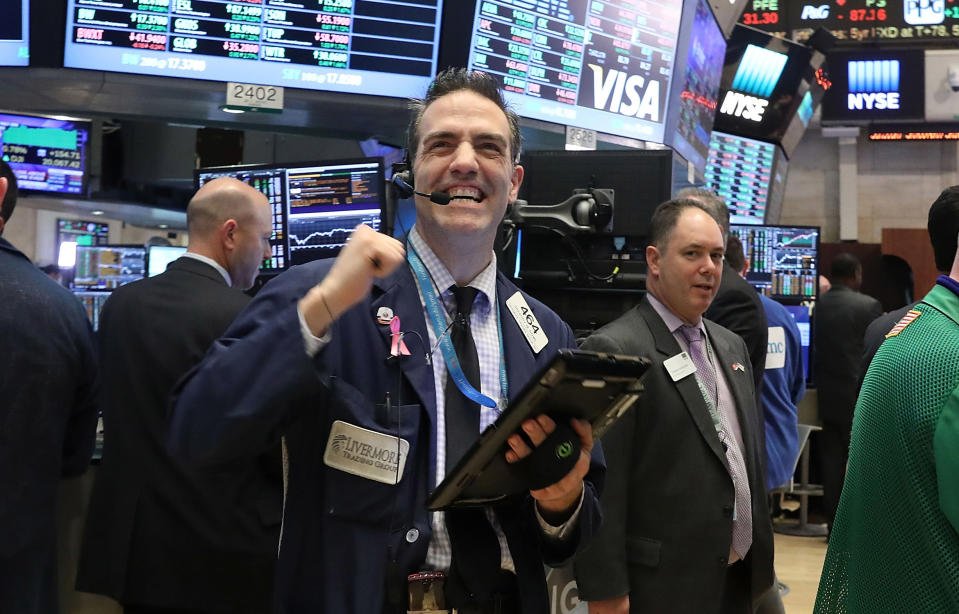The S&P 500 has already met its average return for a full year, but don't expect it to stay here
The average annualized total return for the S&P 500 index over the past 90 years is 9.8 percent. For 2017, in just under half a year, the S&P 500's total return is 9.7 percent.
Looking at these facts side by side, it might seem the market has been twice as generous as usual so far this year, tempting a wary investor to back away from stocks or expect next to nothing more over the coming six months.
Yet equity returns come in waves, not in metered doses. The market gets on a roll, overshoots, retrenches, and sometimes—as in the 18 months ended last November—just slides sideways.
One of the market's more intriguing and mischievous traits is that it rarely produces the long-term "average" return in a given calendar year.
Looking now only at price returns (not counting dividends), a gain between five and 10 percent is one of the rarest results for stocks. According to data furnished by LPL Financial senior market strategist Ryan Detrick, in the 89 years from 1928 to 2016, only six finished with a gain in that range that we think of as a "typical" annual return.

Source: LPL Financial
More than a quarter of all years saw better than 20 percent appreciation. And Detrick notes, too, that the S&P 500 advanced 9.5 percent last year - and has never seen two straight years of gains between five and 10 percent.
So, if the historical odds are against stocks just idling near this level for the next several months, which way are they likely to go?
Strictly looking at past periods that closely resemble this one - quiet years in an uptrend, with plenty of new highs and good market breadth - the evidence points toward further gains in the second half. Yet the calm is increasingly likely to be interrupted by the sort of more noteworthy downdraft that we haven't had in quite a while.
When the S&P 500 was up at least 7.5 percent on its hundredth trading day of a year, as it was this year, it added to those gains through year-end 20 out of 23 times.
And since 1950, when the S&P 500 has made at least 15 new all-time highs through May, it was far more likely to keep rising through December, and the average further gain over the final seven months was 7.7 percent, far better than the 4.5 percent average for June-December in all years.
A slightly different screen by Sam Stovall of CFRA - testing for years with as many new highs and similar lack of volatility as 2017 - found a similarly heavy probability of generous further upside.
The largest and most significant exception to these patterns came in 1987 - a year that began with powerful upside momentum, faltered in mid-summer, then crashed in October to wipe out the early-year gains. It's a scary year to come up in the comparative analysis.
But it's also important to note the market was up a whopping 40 percent in the first seven months of that year - a ferocious blow-off rally. And stocks got very jumpy and started losing altitude badly in August. The crash did not blindside an otherwise placid tape.
Still, this market has gone so long without even the sort of routine 5 percent pullback that visits even the best of years that even bullish investors should be checking their mirrors and blind spots.
The recent wobble in big-cap tech stocks that dropped the Nasdaq 100 (NDX) index by 4.5 percent could foreshadow at least a mild gut check for the broader market. Investor Urban Carmel of the Fat Pitch blog notes, "In the past seven years, falls of more than 4 percent in NDX have preceded falls in SPY of at least 3 percent. That doesn't sound like much, but it would be the largest drop so far in 2017."
Seasonal patterns, which have an iffy record in the past year or so, also suggest the market should get choppier pretty soon, for what that's worth. The best way to prepare for what an inherently unpredictable market might deliver is to assess the weight of the evidence and remain open to a range of outcomes.
Maybe if the market does keep chugging a good deal higher, it will finally deserve the "bubble" label (which it really doesn't right now), and perhaps it will grow more unstable as it does so, and be hounded by a collicky credit market rather than the current stoic one. None of this is observable yet.
One of the least welcome messages in the latter part of a bull market, with more than enough discomfiting headlines to go around, is "Don't worry so much." But, for better or worse, this is what the probabilities are suggesting at the moment.
Sure, stout valuations today imply so-so returns over the long term. But, remember, the market bestows its returns in unpredictable gulps, not measured sips.

 Yahoo Finance
Yahoo Finance 

